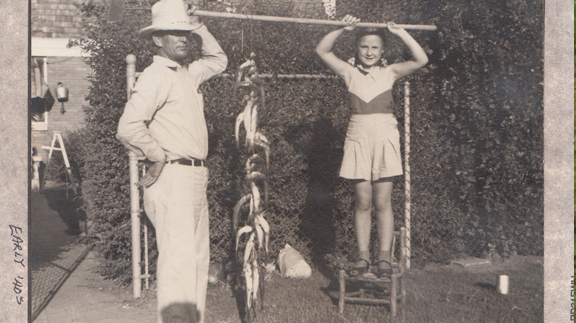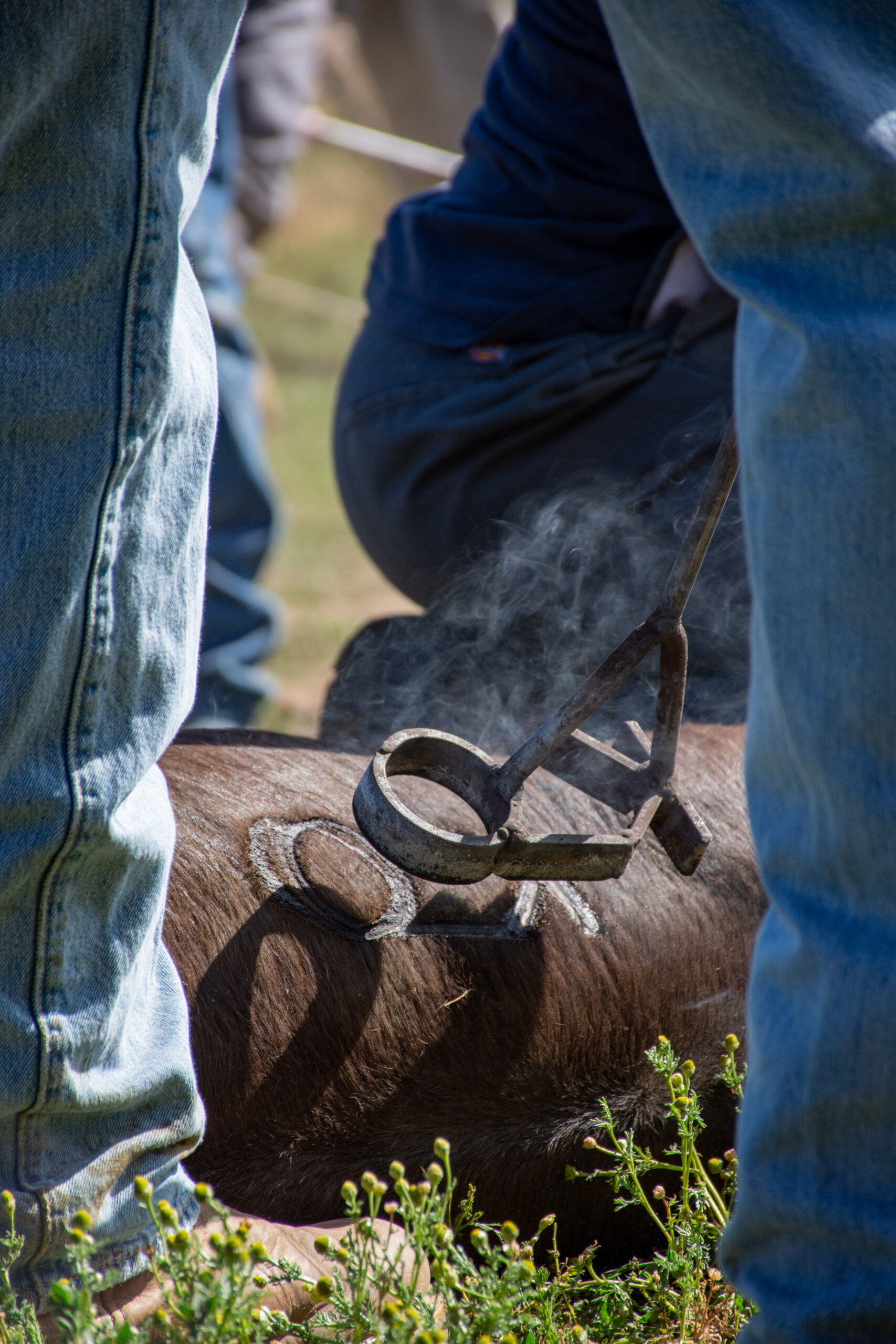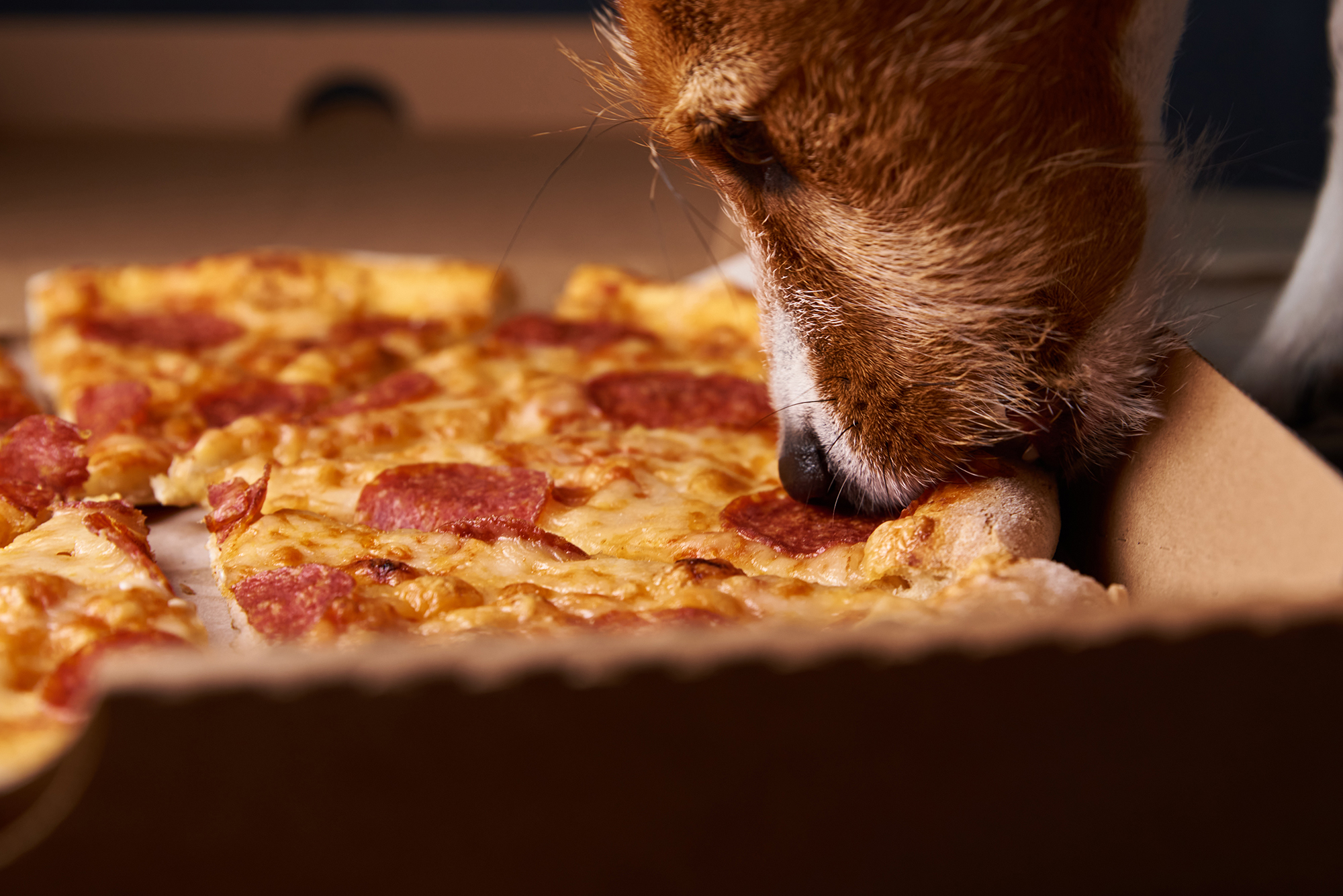Country Lifestyle
A rancher’s daughter

Sue Seay Dennis of Dennis Cattle Co.
By Jessica Crabtree
Everyone should know their lineage: the story of how their family came to be and got to where they are today. Its worth is priceless. That is how your story can be passed down for generations so that your children know who their relatives were and what prominent things they did in their time. That is something to be proud of. Sue Seay Dennis was the only child born to Wilmer and Leary Seay. The Dennis Cattle Co. ranching heritage dates back to 1899 when Oscar, Okla., was founded. Eighteen miles southeast of Ryan, Okla., the town was name after Oscar W. Seay, a prominent pioneer rancher who helped settle the land and established a family ranch. Oscar Seay was Sue’s great-grandfather. As a third generation rancher herself, Sue wanted to do just that and be on the land. Her fondest memories included her dad. “I made every step he did! I would leave my bonnet next to his hat so he couldn’t go anywhere without me,” said Sue. Wilmer was one of five children. After his father’s death, the land was divided and straws were drawn among the children. Although drawing the short straw, Wilmer was fortunate when the property he got was filled with oil wells. Over time Wilmer accumulated more land, even buying out all his other siblings except two. Wilmer Seay was a hard-working man who was always seen with a cigar in his mouth. The rancher and oil man quit school after the third grade declaring, “He knew all he needed to know,” said daughter Sue. Wilmer ranched all his life, driving cattle miles to rail cars. Sue reminisced on her father waking extra early in the mornings, around 4 or 5 a.m. One time she asked him, “Daddy, why do you get up so early? His response, “That’s when I do my best thinking!” Sue recalls her father taking three and four-year-old, 1,400 lb. steers down to his ranch in Ringgold. Sue chuckles at the memory of her father driving his steers to Ringgold before asking what time the train came through. After the work of gathering them and starting toward Ringgold, he got all the way to the tracks in Ringgold when the train came through and scattered the entire herd. That left Wilmer searching for steers for three days. Sue said thereafter her father called the rail road every time before moving cattle. Wilmer bought the ranch in Ringgold in 1938 from Carl Worsham’s Creditors Committee. Worsham, who came from a wealthy business, banking and ranching family himself, was one of two children born to W.B. Worsham. W.B. was known as a prominent banker and rancher, even owning his own bank at one time. His son, Carl fell right into his footsteps. Carl Worsham died Sept. 29, 1935. Sue’s father Wilmer purchased the Carl Worsham ranch from Carl Worsham’s Creditor’s Committee. The property was approximately 4,000 acres. On the property was a home built by Carl Worsham. Built in 1919, the three-story home was a mixture of lavish light fixtures and wood all of European origin. Mr. and Mrs. Worsham were said to have imported all the wood and accessories to the home from Europe. Mrs. Worsham even manicured her landscaping to mimic that of an English garden. The majestic structure was complete with the top story as a dance hall. Sadly, the story is told that Worsham went into bankruptcy over the home. In 1958 Sue’s father deeded the Ringgold ranch to her. Due to deteriorating conditions the third story of the house was demolished, leaving a single story and small attic which still stand today. The great walls of wood and mantel pieces adorned with murals of a peacock and wagon train can only make a mind wonder what the home once looked like in its time of glory. Tales have been told among ranch hands of sightings of a man in a white shirt. Some wonder if Carl Worsham still inhabits the ranch today. Since then Sue has maintained the ranch as her father did, of course with his help along the way. The ranch gained ample help when Sue married Skeeter Dennis in November of 1950. With roots in ranching as well, Skeeter helped round out the total acreage to approximately 30,000 acres in Oklahoma. Skeeter’s father, Scott Dennis and Wilmer forged a strong working relationship that lasted their lifetimes. Sue mentioned that between the two there was never a cross word. Sue attributed most of her ranching knowledge to her father. When asked what she took away from the man she adored most, she replied, “Honesty, caring about people and loving ranching and the land.” Many memories are still shared today of Wilmer’s “character.” Sue described him as being a caring man, always keeping a garden and giving fresh produce to others, a man who cared a great deal about working ranch horses, hated burs and sunflowers, sealed deals with a hand-shake and until his departure came out to the ranch daily to oversee progress. Wilmer’s granddaughter, LaDonna still enjoys thinking back to the days of riding around with her grand-dad, “We would drive around in his Cadillac in the pasture and come up on an abandon baby calf, throw it in the back and off we’d go!” Sue revealed her father was a strong Republican who told her, “You stand under the eagle, even if he _ _ _ _s on you.” When asked if she still heeds her father’s advice, her response was, “Yes, I still vote Republican. Daddy said!” Wilmer died in 1976. Skeeter Dennis was known for his long-time involvement in the cutting horse industry. Skeeter was a lifetime member of both the National Cutting Horse Association and the American Quarter Horse Association. Skeeter was even presented with the AQHA Legendary Breeders Award in 2011. Sue describes her late husband as a “handful.” Together the couple had four children, Steve, LaDonna, Cindy and David. The two continued ranching with their family, building their empire of Hereford and Angus cattle up to 1,400 cow-calf pairs, 300 replacement heifers, and 50 bulls, along with steers and Longhorns. The family also built up an impressive herd of Quarter Horses with bloodline going back to top cutting horse and reining horse sires. Skeeter died in August of 2013. Today, LaDonna oversees the horses with a total of 25 head. Dennis Cattle Co. is a member of the AQHA Ranching Heritage Breeder Assoc., NCHA, American Hereford Association, Oklahoma Cattleman’s Association and Texas Cattle Raisers Association where they’ve been a member of since 1931. In 2009, Dennis Cattle Co. was given the “Excellence in Grazing” award by the Jefferson County Conservation District. Additionally, Dennis Cattle Co. offers semi-guided hunts. That includes hunts for deer, turkey, hogs and coyotes. Also, they do aerial spraying and hog hunts from helicopter. The tall, feisty rancher’s daughter still resides on the ranch today in a cabin built in a special spot near a creek where she and her father would go play in the creek and build towns, calling them old California. She now watches the sixth generation grow up on the ranch and play in those very same creeks. Sue now has the opportunity to pass onto her great-grandkids what life was like for her growing up, life lessons and valuable advice passed down from her father and from his to him. Priceless memories include expression lessons in Nocona when she was four or five, riding in the back of her dad’s pickup to the river, tap lessons and piano lesson she begged her parents not to take, cooking for branding crews, driving across an iced tank with her dad and so much more. Other interesting facts about Sue include, having a ticket to the Fort Worth Stock Show the last 82 years and only missing three years of it, and the fact that she wrote a cook book entitled, “Cooking in the Cabin.” Undoubtedly life on the ranch sees down times. Sue has seen it from drought to floods. She doesn’t remember an actual dust bowl, but remembers bad dust storms. She saw a time when sugar and tires were rationed and you had to have war stamps for each. She saw a time of flood that baby calves washed down the river. She saw a time when people followed the river and oil boom, living in small shot-gun houses. The change she remembers most is the present drought. Sue knows of tanks on their place that were there way before her that are dry today. The drought of the 50s holds no candle to the present in her mind. In her 84 years, Sue hasn’t seen it all yet. She is an avid traveler. She has traveled to almost every state except to the north where she has no desire to visit. As a rancher’s daughter, granddaughter and wife, she has lived through it all. Above all she is a cancer survivor with an appreciation for life and a family lineage that will carry on for many generations to come. For additional information about Dennis Cattle Co. their cattle, horses or hunting visit their website at denniscattleco.com or sandbhelicoptertours.com

Country Lifestyle
Riding for the Brand

By: Christopher Dysinger
According to the Code of the West a man who has integrity is one who rides for the brand. If you are unfamiliar with cowboy parlance this phrase is used to describe being loyal to the outfit you work for. Cowboys were, “intensely loyal to the outfit they were working for and would fight to the death for it. They would follow their wagon boss through hell and never complain.” -Teddy Blue Abbot. Riding for the brand means being loyal and when I consider what it means to be loyal I am reminded of the words of the Lord Jesus to His disciples in Matthew 16:24, “Then said Jesus unto His disciples, If any man will come after Me, let him deny himself, and take up his cross and follow Me.” To me, to take up the cross and follow the Lord is the epitome of what it means to ride for the brand.
When you place your trust in the Lord Jesus you are signing on to His outfit, to speak the language of the West. When you called upon the name of the Lord Jesus by faith, He saved you and from this point you are riding for His brand. In taking up your cross and following Him you have pledged to be loyal, and this means you face any hardship or trial like a cowboy on the trail moving the herd. Any complaint must be swallowed in the same way you would swallow a cup of coffee. When I hear our faith and loyalty to the Lord Jesus put into these terms it stirs something within me that moves me to keep right on riding for the brand.
Louis L’amour wrote, “Riding for the brand was an expression of loyalty to a man’s employer or the particular outfit he rode for. It was considered a compliment of the highest order in an almost feudal society. If a man didn’t like a ranch or the way they conducted their affairs he was free to quit, and many did; but if he stayed, he gave loyalty and expected it. A man was rarely judged by his past only by his actions. Many a man who came west left things behind him he would rather forget, so it was not the custom to ask questions. Much was forgiven if a man had courage and integrity and if he did his job. If a man gave less than his best, somebody always had to pick up the slack, and he was not admired.” It is the same when a person gives his or her heart to Jesus.
When you come to the Lord Jesus you are not judged by your past. When you come to the Lord Jesus, repenting of sin and seeking forgiveness, everything from your past is left behind. All will be forgiven. 1 John 1:9 reads, “If we confess our sins, He is faithful and just to forgive us our sins, and to cleanse us from all unrighteousness.” When you place your faith in the Lord Jesus you are promising to be loyal and in return you will receive the same. He has promised that He will never leave us or forsake us. When you walk with the Lord Jesus through life you are indeed, “riding for the brand.”
“Riding for the brand” is not just an expression of loyalty nor is it just an expression of pride, it is also an expression of love. When a cowboy claims to be riding for the brand, he is telling any other outfit who may seek his loyalty, that he cannot give it, because he has given his word to another. It is the same when we pledge our faith and loyalty to the Lord Jesus. If any would call us away from Christ we cannot go, because we are riding for the brand.
The End
This article is an excerpt from the book, The Bible and the Code of the West by Dr. Christopher Dysinger.
Country Lifestyle
Farm Dogs & Table Scraps

What’s Safe and What’s Not?
Growing up on a farm, our dogs were tough. They roamed the pastures, slept under the barn, and ate just about anything they could get their paws on—whether we meant for them to or not. I’ll admit, I never thought twice when one of our old cow dogs snatched a biscuit off the table or licked up a spill from the barn floor. I’ve even seen a dog steal a whole rib bone off a plate and trot off like he’d won the lottery. And somehow, they always seemed fine.
But here’s the thing—just because they survived doesn’t mean it was safe. For every farm dog that lucked out, there’s another that wasn’t so fortunate. Some human foods can be downright toxic to dogs, and a little bit of bad luck (or a smaller, more sensitive dog) can turn a harmless snack into an emergency.
Common toxic foods lying around the farmhouse
If you’ve got a farm dog—or any dog, really—you need to be aware of the dangers lurking in everyday foods. Some of the biggest culprits include:
Chocolate – The darker it is, the worse it is. Even a little can cause vomiting, seizures, or worse.
Grapes & Raisins – No one’s exactly sure why, but they can cause kidney failure fast.
Onions & Garlic – In large enough amounts, these can destroy red blood cells, leading to anemia.
Xylitol (Found in Sugar-Free Gum & Candy) – This artificial sweetener can send a dog’s blood sugar crashing and cause liver failure.
Alcohol – Even small amounts can be deadly to dogs, affecting their nervous system much more than it does ours.
Bones from Cooked Meat – While not necessarily toxic, they can splinter and cause serious internal injuries.
Macadamia Nuts – These can lead to weakness, vomiting, and even paralysis in dogs.
What to do if your dog eats something toxic
First, don’t panic—but don’t ignore it either. If you know your dog ate something dangerous, call your vet immediately. They can tell you whether to induce vomiting or if it’s something that requires urgent care. If it’s after hours, contact the ASPCA Animal Poison Control Center (888-426-4435) or the Pet Poison Helpline (855-764-7661).
Prevention is always the best medicine, so keep toxic foods out of reach. That might mean keeping the trash can secured, making sure kids don’t slip the dog a treat under the table, or just being more mindful of what’s left on the counter.
Our farm dogs might have been lucky, but luck isn’t a great strategy when it comes to their health. A little awareness goes a long way in making sure they stay happy, healthy, and ready for the next day’s work.
For more information
ASPCA Animal Poison Control: www.aspca.org/pet-care/animal-poison-control
Pet Poison Helpline: www.petpoisonhelpline.com
Visit www.akc.org/expert-advice/nutrition/foods-your-dog-should-never-eat
Country Lifestyle
Summer Squash and Corn Chowder

By Lacey Vilhauer
Total time: 40 minutes
Servings: 6-7
Ingredients
- 6 slices bacon, cooked and crumbled and 1 1/2 Tbsp rendered bacon fat reserved
- 1 1/2 lbs yellow squash, chopped (about 3 medium)
- 2/3 cup thinly sliced celery
- 1 cup diced onion
- 1 Tbsp flour
- 2 cloves garlic, minced
- 2 3/4 cup milk (I used 1%)
- 5 cups canned or fresh cut corn (from about 6 ears corn), divided
- 1/2 cup heavy cream
- 1 1/2 tsp chopped fresh thyme (or 1/2 tsp dried)
- 3/4 tsp salt, then more to taste
- 1/4 tsp freshly ground black pepper, then more to taste if desired
- 3/4 cup shredded cheddar cheese, for serving
- Chopped green onion for garnish (optional)
Instructions
Heat 4 tsp reserved bacon fat in a large pot over medium-high heat. Add celery and onion and sauté 2 minutes then add the squash.
Saute until tender, about 6 minutes, adding in garlic and flour during last 2 minutes of sauteing. Reduce heat slightly.
Add 1 1/2 cups milk, 2 cups of the corn, thyme, salt and pepper to the sauteed veggies.
To a blender add remaining 3 cups of corn, remaining 1 1/4 cups milk and the cream. Process in blender until nearly smooth (about 30 seconds).
Add pureed mixture to pot and stir to blend. Cook until mixture reaches a light boil.
Serve warm with shredded cheese, crumbled bacon and sliced green onions if desired.
-

 Attractions8 years ago
Attractions8 years ago48 Hours in Atoka Remembered
-

 Country Lifestyle9 months ago
Country Lifestyle9 months agoJuly 2017 Profile: J.W. Hart
-

 Country Lifestyle9 years ago
Country Lifestyle9 years agoThe House a Treasure Built
-

 Country Lifestyle4 years ago
Country Lifestyle4 years agoThe Two Sides of Colten Jesse
-

 Outdoors7 years ago
Outdoors7 years agoGrazing Oklahoma: Honey Locust
-

 Equine8 years ago
Equine8 years agoUmbilical Hernia
-

 Outdoors5 years ago
Outdoors5 years agoPecan Production Information: Online Resources for Growers
-

 Farm & Ranch7 years ago
Farm & Ranch7 years agoHackberry (Celtis spp.)




